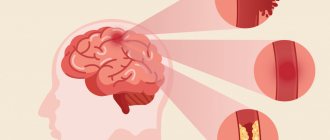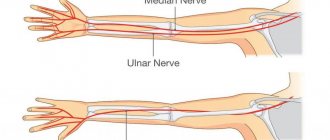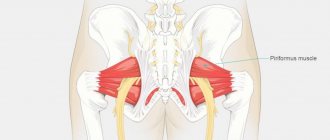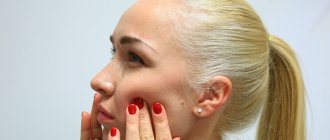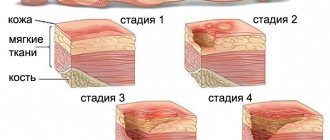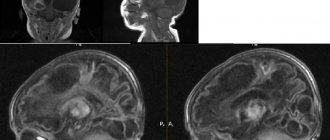Periostitis is an inflammation of the periosteum, which most often develops as a result of other diseases. Typically, the inflammatory process begins in one layer of the periosteum, and as the disease progresses, it spreads to the rest. The bone and periosteum are closely connected to each other, so there is a possibility of developing a complication in the form of osteoperiostitis - the spread of inflammation, including to bone tissue.
Uncomplicated forms of periostitis are treated by dentists. In addition to treating this disease, it is important to pay attention to the treatment of the underlying pathology that caused the inflammation.
Causes and symptoms of periostitis
Symptoms of periostitis include swelling of the gums and face, suppuration, fever, and severe pain. The severity of dental flux manifestations depends on the form and severity of the disease. Swelling and asymmetry of facial contours depend on the location of the inflammation. With periostitis of the upper jaw, swelling of the upper lip, cheek and infraorbital area occurs. With periostitis of the lower jaw, swelling can be observed in the lower part of the face.
The causes of flux can be:
- failure to comply with hygiene rules;
- diseased or untreated teeth;
- consequences of complex tooth extraction;
- jaw injuries;
- infectious and inflammatory processes in the body;
- weakened immunity.
Causes of temporomandibular joint arthritis
Arthritis does not show pronounced symptoms immediately; its development can be asymptomatic for a long time or with minor pain. Out of habit, a person reacts to pain by taking painkillers, which only makes the situation worse. Anesthetics relieve symptoms, but do not remove the cause. The disease “takes over” more and more healthy tissue and, as a result, instead of treatment, the patient receives disability. Let's figure out why TMJ arthritis can develop.
- 1. Mechanical injury. Impact, the habit of clenching teeth tightly, and active chewing of hard food can lead to damage to one or more components of the joint. Articular tissues respond to damage with pain and dilation of blood vessels. Simply put, blood enters from the vessels directly into the tissue, causing swelling, inflammation, and, if treatment is delayed, suppuration.
- 2. Infection. The inflammatory process develops as a result of pathogenic microorganisms entering the joint through the blood or through direct and contact routes. The direct route of infection involves inflammation of the TMJ as a result of an open wound (knife or gunshot wound). If microorganisms have penetrated into the cartilage from infected muscle or bone tissues, then the pathology of transmission is called contact. All diseases of the oral cavity (as well as ear, nose and throat) can lead to arthritis of the temporomandibular joint through the hematogenous route, through the blood.
- 3. Systemic inflammation. Some pathologies of an inflammatory nature (herpes, hepatitis, mycoplasmosis, chlamydia, lupus), if not treated in a timely manner, affect connective tissue throughout the body.
Features of the treatment of dental periostitis
To treat tooth flux, conservative and surgical methods are used. The choice of treatment method depends on the causes and degree of neglect of the disease.
The conservative method (without surgery) is used:
- at the initial stage;
- caused by weak immunity;
- due to other inflammations in the body.
For non-surgical treatment of flux, anti-inflammatory and antibacterial drugs and physiotherapy are used. The tooth is not removed, but the gum is cut in the area of swelling and drainage is installed.
In the case of purulent inflammation associated with dental diseases (odontogenic periostitis), or when conservative treatment is ineffective, surgical intervention is used.
Symptoms of TMJ arthritis
Depending on the cause of the disease and the nature of the inflammation, arthritis manifests itself with the following symptoms:
- sharp pain when moving the jaw. Increases in opening/closing of the mouth, strongly radiates to the temple, back of the head, tongue;
- when you try to open your mouth wider, the jaw moves to the side;
- inability to close teeth tightly;
- hearing loss, dizziness;
- crunching when moving the jaw.
If at least 2 signs are detected, we recommend that you do not wait for the consequences, but contact the dentist. Correct diagnosis ensures the necessary treatment and recovery in a short time. In the later stages, the dentist will not help. And treatment will cost much more.
If you have a problem similar to that described in this article, be sure to contact our specialists. Don't diagnose yourself!
Why you should call us now:
- We will answer all your questions in 3 minutes
- Free consultation
- The average work experience of doctors is 12 years
- Convenient location of clinics
Single contact phone number: +7
Make an appointment
Stages of surgical treatment of flux:
- anesthesia (usually local);
- opening the focus of suppuration (gum incision);
- removal of pus;
- drainage (installation of drainage to ensure the outflow of inflammatory fluid);
- X-ray (to determine the cause of periostitis);
- removal of a diseased tooth or drug treatment.
In addition, for acute purulent periostitis, antibiotics, physiotherapy and painkillers are usually prescribed. Treating periostitis with antibiotics at home without consulting a doctor can cause side effects and resistance of pathogenic bacteria to the drug.
What to do if the lower jaw is inflamed
First of all, it is important to identify the symptoms of the problem. One of the very first and most obvious is an increase in soft tissue volume.
This can be either a slight swelling or a very large tumor-like formation. Other symptoms may include:
- Increased body temperature.
- Redness of the skin.
- Painful sensations.
- Incomplete opening or closing of the jaw.
- Sensation of a foreign body in the throat.
- Difficulty chewing or swallowing.
- Hearing loss.
If the symptoms are confusing and it becomes unclear which doctor you need to see, you can make an appointment with a therapist who will conduct an initial examination, examine the complaints and issue a referral to the right specialist.
Treatment of various types of periostitis
Treatment of serous periostitis
Serous periostitis can occur due to jaw trauma. No special therapy is required to treat serous periostitis. At this stage, it is possible to clean the dental canal and create the opportunity for the independent release of fluid (exudate) during inflammation.
Treatment of acute purulent periostitis
In the case of acute purulent periostitis, the dentist cuts the gum, removes the pus and drains the suppuration. When draining, the tip of a rubber strip (drainage) is inserted into the cavity at the incision site. Drainage prevents the wound from healing too quickly and allows fluid to drain out. It is advisable to remove a diseased tooth, the source of infection of acute periostitis, if:
- severely damaged crown;
- obstruction of root canals;
- lost functionality;
- ineffectiveness of the non-surgical method;
- mobility.
In other cases, it is recommended to eliminate the relevant causes of infection (for example, inflammation of the tonsils and throat), as well as restore the immune system. The most effective approach to the treatment of acute purulent periostitis is complex therapy, combining surgery, drug therapy and physical therapy.
Treatment of diffuse periostitis
Diffuse periostitis is characterized by widespread infection, not limited to a local focus. This is a severe type of disease. As a rule, the patient needs the help of maxillofacial surgeons. In stationary conditions, an operation is performed to remove part of the periosteum or bone. Treatment of diffuse periostitis is complemented by drug therapy and detoxification.
Treatment of chronic periostitis
Chronic periostitis is a sluggish infection typical of patients with impaired immunity. If disease is present, the inflamed area is cleaned and physical therapy is prescribed to reduce symptoms and eliminate infection. In particularly difficult cases, the treatment of chronic periostitis may require serious surgical intervention to completely remove diseased tissue. In addition, with this form of flux, it is important to carry out therapy with vitamins and means to strengthen the immune system. An integrated approach stimulates an increase in the body's immunity.
Treatment of periostitis with physical factors
The complex approach to the treatment of periostitis is complemented by the use of therapeutic physical factors:
- ultra-high-frequency therapy (an electromagnetic field, or UHF, acts as a therapeutic factor in inflammatory processes);
- magnetic applicators (magnetotherapeutic treatment of inflammatory processes);
- medicinal electrophoresis (using an electric current of low voltage and low strength, a medicinal substance is introduced into the body as an additional therapeutic factor);
- helium-neon laser rays (have anti-inflammatory, bactericidal, regenerative effects).
Treatment of gumboil with folk remedies
In order not to harm the body, folk remedies for treating flux can only be used for temporary pain relief or as a supplement during the recovery period.
- Infusions of oak bark, sage, St. John's wort, and calendula are used to rinse the mouth (strictly warm solutions).
- Chamomile flower tea is taken orally and is also used as a mouth rinse.
- Honey or honey propolis products are used to lubricate the gums.
In case of treating periostitis at home, you should consult a doctor. In any case, you should not postpone a surgical visit to the dentist when the first symptoms of gumboil appear on the gums or replace medical therapy with self-medication. When treating flux only with folk remedies, inflammation can spread further or develop into chronic periostitis.
With a timely and comprehensive approach to the treatment of periostitis, the disease is successfully cured. However, full recovery will require the help of a qualified dentist, medical procedures and medications.
“I was blown away” or the dangers of drafts and air conditioners
Is the air conditioner causing trouble?
Therapists warn about the serious impact of air conditioning on human health.
The use of air conditioners provokes a summer surge in acute pneumonia, sinusitis, tonsillitis, cystitis and other inflammatory diseases, which patients themselves aptly summarize with the word “produlitis”. Sometimes patients even argue with allergists, claiming that there is such a terrible disease in nature as an allergy to air conditioning! By the way, doctors still have not come to a consensus about allergies. But the leak of some specific components from the cooling system can actually cause a dry throat, cough or asthma-like attack. Well, many have heard about the terrible infection that first broke out in the 70s of the last century at an American gathering of legionnaires and claimed the lives of 1% of the delegates. This is legionellosis, in which the Legionella bacterium, which multiplies in an aquatic environment and is carried throughout the room by air conditioning systems, causes a disease similar to pneumonia.
But besides these unpleasant diseases, an urbanist who has fallen into the tenacious clutches of progress also experiences a less dangerous, but more common condition - severe muscle pain in that part of the body that has been exposed to a stream of cold air.
What happens in the muscle? Banal aseptic (non-infectious, non-purulent) inflammation! In response to the local (local) effect of cold, tonic tension or, in other words, muscle spasm occurs in the muscle. Blood circulation is disrupted in the muscle, unnecessary substances accumulate, including inflammatory mediators that activate pain receptors.
And the “wheel of Samsara” began to spin: pain - spasm - pain again. If measures are not taken immediately (rubbing, warming massage, gymnastics, relaxation exercises), then muscle stiffness will increase, and the next morning you will have to go to the doctor.
Muscle pain of this type is very susceptible to those who are forced to maintain an uncomfortable position for hours (office workers, drivers working on an assembly line) and... people who often experience emotional stress. Stress also leads to muscle tension, so a little bit is enough for the cascade of illness to start even from a “small breeze,” which is what lovers of Russian frosts call a scorching stream of cold that knocks them off their feet.
Doctor's advice
For many years, doctors around the world have been instilling in their patients the truism that pain should not be tolerated. That pain is the body's signal of danger. That the method of “enduring it” usually always leads to sadder consequences than the fear of boring the doctor with your ailments. Doctors now have many ways in their arsenal to relieve muscle spasms and relieve pain. It is only important to apply on time!
And the prevention of “air conditioner diseases” is complex and simple at the same time. Here are a few rules that everyone should try to follow:
1. Try not to be exposed to a direct stream of cold air.
Nowadays, air conditioners have various curtains and guides to ensure an even distribution of cold and warm layers in the room. Read the installation instructions or contact a specialist. It is especially important to ensure that the air conditioner does not blow on you at night, since it is at night that the most dramatic events take place in the backs of our patients. When the air conditioner is on, it is not recommended to open doors and windows, as this will become an additional source of draft and increase the risk of hypothermia.
2. You can close curtains or blinds so as not to create a greenhouse effect in the room from surfaces heated by the sun.
You can tint the windows or cover them with reflective film, insulate the room with special materials - just like to keep warm in the winter, thermal insulation is necessary in the summer to keep cool. In the evening, by opening the windows on the cooler side, you can use fans, also making sure that people are not exposed to the air flow from them.
The fact is that the difference between the street temperature and the temperature in the refrigerated room, according to doctors’ advice, should not be more than 4–8 degrees. Otherwise, it is the temperature difference that will give you a “cold” or myositis. And the vascular system may not forgive such stress.
It’s also worth considering buying energy-saving light bulbs, because they emit 80% less heat than conventional incandescent light bulbs. And in general - turn off unused electrical appliances - they also heat the air in the rooms by 1-2 degrees, but imperceptibly. In addition, under windows facing the sunny side, you can plant a beautiful tree. In a few years, you will be able to appreciate your contribution to the greening of the city and enjoy the shade and view of greenery. Nice and useful!
3. The air conditioner must be cleaned regularly.
Over time, an uncleaned air conditioner filter begins to spread pathogenic microorganisms with the air flow. For home air conditioners, experts recommend washing the filter every week. For workers, especially do not spare money and time - the absence of workers will be more expensive!
4. You should consider purchasing air humidifiers.
Air conditioners can cause a decrease in humidity in the room, and dry skin and mucous membranes are not the most pleasant feeling in the cool air. This phenomenon, of course, has positive sides. Drying prevents the growth of mold, fungal infections of the walls and ceiling of the room, and removes the smell of dampness and blooms inherent in climates with high humidity. But people are suffering.
5. Use other ways to cool down,
but without fanaticism: drinks with ice are undoubtedly a good method of cooling from the inside, but they can easily cause hypothermia of the mouth and throat. To avoid going to the dentist and otolaryngologist later, you should drink them in small sips. The same recommendation applies to hot tea, which also stimulates the body’s self-cooling only by increasing sweating. In this case, the person should wear clothes made from natural fabrics that absorb sweat well.
You can try cold and hot showers. For children, it is worth remembering such an ancient method of cooling as wrapping a wet towel around the head and places where the pulse can be easily felt: on the elbows, wrists, under the knees. You can simply pour cool water over your child’s feet. If the heat still gets too hot, you can install a fan that will blow on a regular plastic bottle with frozen water - this can reduce the air temperature in a small room by 2-3 degrees.
6. Try to reduce the time you use the stove and oven.
A natural reaction to heat is a decrease in appetite, so during hot times of the day you can limit yourself to cold appetizers and salads. Search the Internet for many recipes for summer “snacks” that will not spoil the figure of those losing weight and will allow your child to eat well during the holidays.
7. Try to limit physical activity in the hottest weather.
You should not start repairing your balcony around noon, or organize shopping or a walk in crowded places. Make sure that the doors in the entrances are tightly closed in hot weather, and in the evening - ventilate the premises thoroughly. Make sure that any banners and advertising do not obscure the windows of offices and apartments. Carry a bottle of water with you - you or others may need it. Be carefull! Do not leave children and elderly people in the sun. Especially in cars...
8. It is worth taking care that the bed and bedding do not retain excess heat.
Somnologists (sleep specialists) recommend using “summer” fabrics and light-colored linen, special pillow fillings and mattress cover. The optimal comfort temperature for a person is 22–23 degrees, but for sleep it is better if the room temperature is 18 degrees and you are covered with a light blanket.
Remember that people have lived on Earth for several million years, and air conditioning was invented only recently. Try to lead a healthy lifestyle, maintain good physical shape, strengthen your immune system - and you will feel great both in the winter cold and in the summer heat.
Valentina Saratovskaya
Photo thinkstockphotos.com
